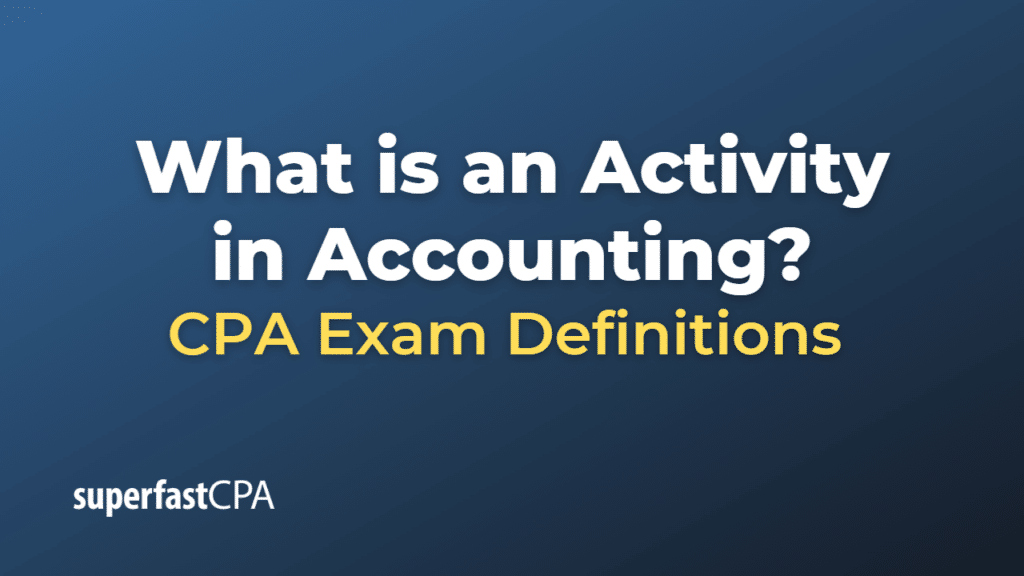Activity
In accounting, the term “activity” typically refers to a specific action or transaction that affects the financial position of a business. Activities can be categorized into different types based on their nature, such as operating, investing, and financing activities.
- Operating activities: These are the primary business activities that generate revenue and involve the day-to-day operations of a company. Examples include the sale of goods and services, payment of salaries, rent, and other operating expenses, and the collection of accounts receivable.
- Investing activities: These activities involve the acquisition and disposal of long-term assets, such as property, plant, equipment, and investments in other companies. Examples include the purchase of machinery, sale of a building, or the acquisition of another business.
- Financing activities: These activities relate to changes in a company’s capital structure and involve raising or repaying capital. Examples include issuing stocks or bonds, borrowing funds, repaying loans, or paying dividends to shareholders.
Accounting activities are recorded in the financial statements, such as the income statement, balance sheet, and cash flow statement. Understanding and analyzing these activities helps management, investors, and other stakeholders evaluate a company’s performance and make informed decisions about its future prospects.
Example of an Activity
Let’s consider a fictional company, XYZ Corp, and look at examples of operating, investing, and financing activities in its accounting records.
- Operating activities:
- XYZ Corp sells $50,000 worth of products to its customers on credit during the month of March. This sale is an operating activity and will be recorded as revenue in the income statement.
- In the same month, XYZ Corp pays $20,000 in salaries to its employees. This payment is also an operating activity and will be recorded as an expense in the income statement.
- Investing activities:
- In April, XYZ Corp decides to expand its operations and purchases new machinery for $100,000. This acquisition is an investing activity, and the machinery will be recorded as a long-term asset on the balance sheet.
- Later in the year, XYZ Corp sells a piece of land it no longer needs for $80,000. This sale is another investing activity, and the proceeds will be recorded as a gain on the sale of the asset in the income statement.
- Financing activities:
- In May, XYZ Corp issues new shares to raise $200,000 in equity financing. This activity is a financing activity, and the proceeds will be recorded as an increase in the shareholders’ equity section of the balance sheet.
- In June, XYZ Corp borrows $150,000 from a bank as a long-term loan. This borrowing is a financing activity, and the loan will be recorded as a long-term liability on the balance sheet.
These are just a few examples of accounting activities that XYZ Corp might undertake in its normal course of business. These activities will be reflected in the company’s financial statements and help stakeholders understand its financial position and performance.













